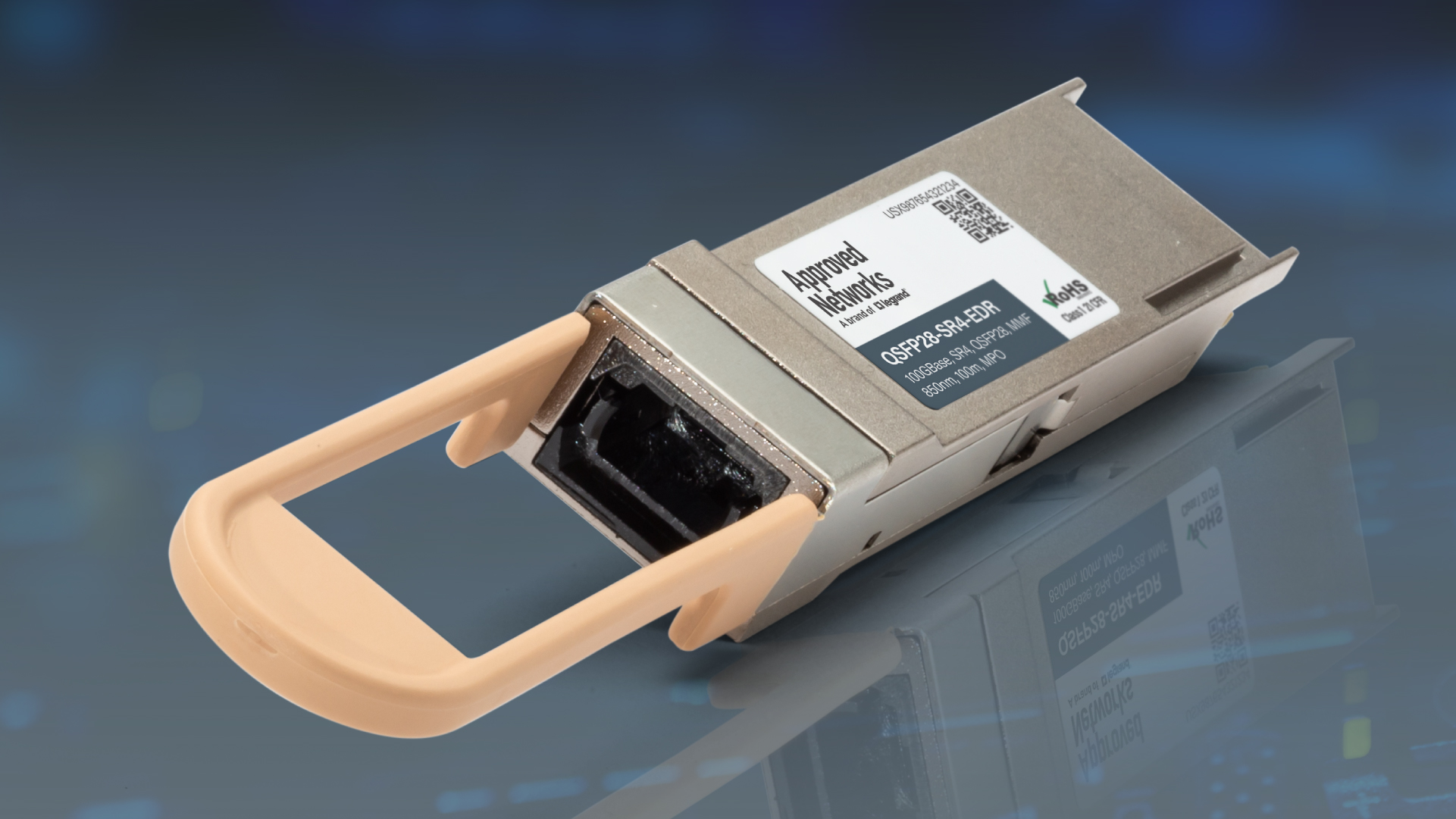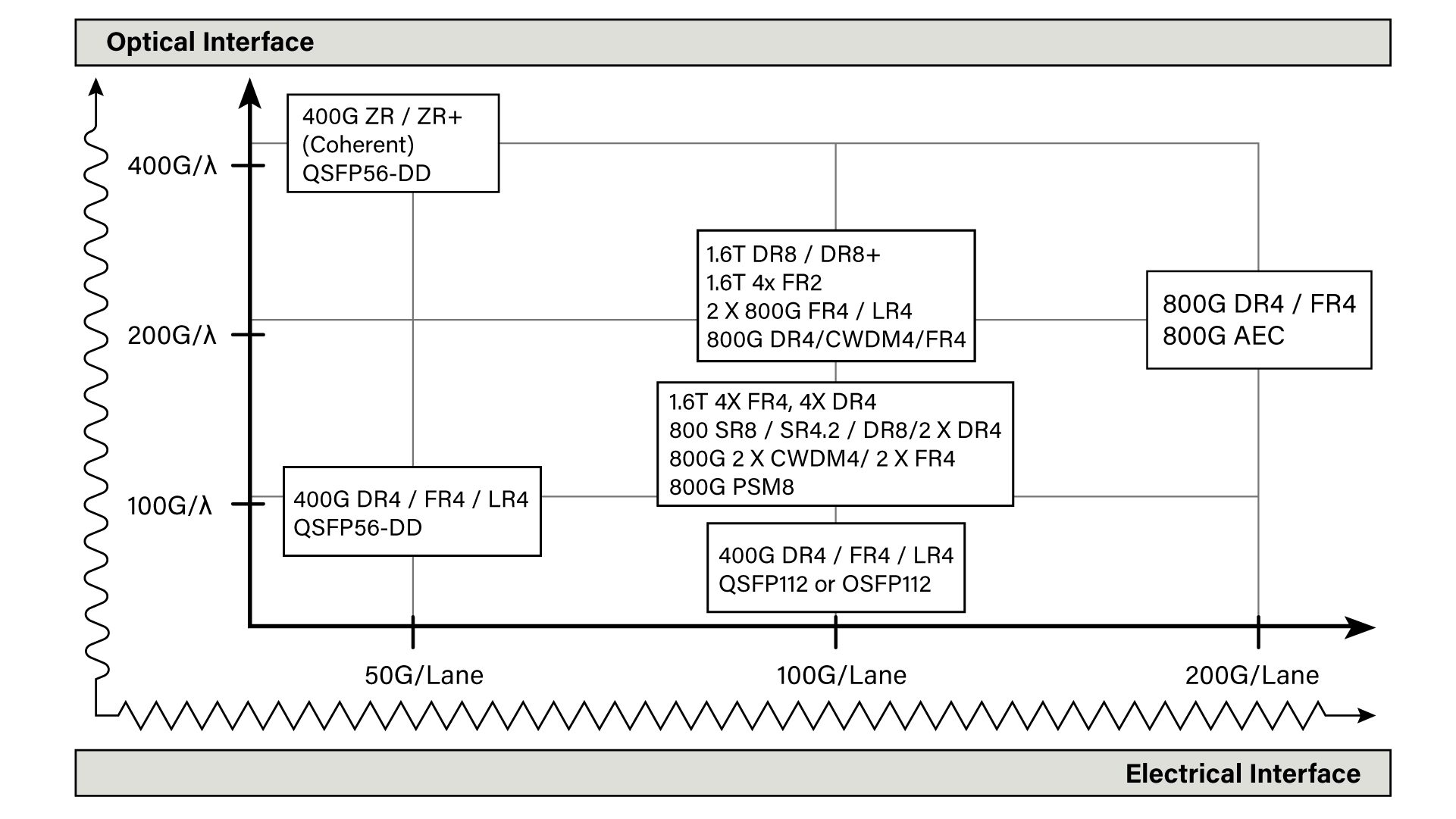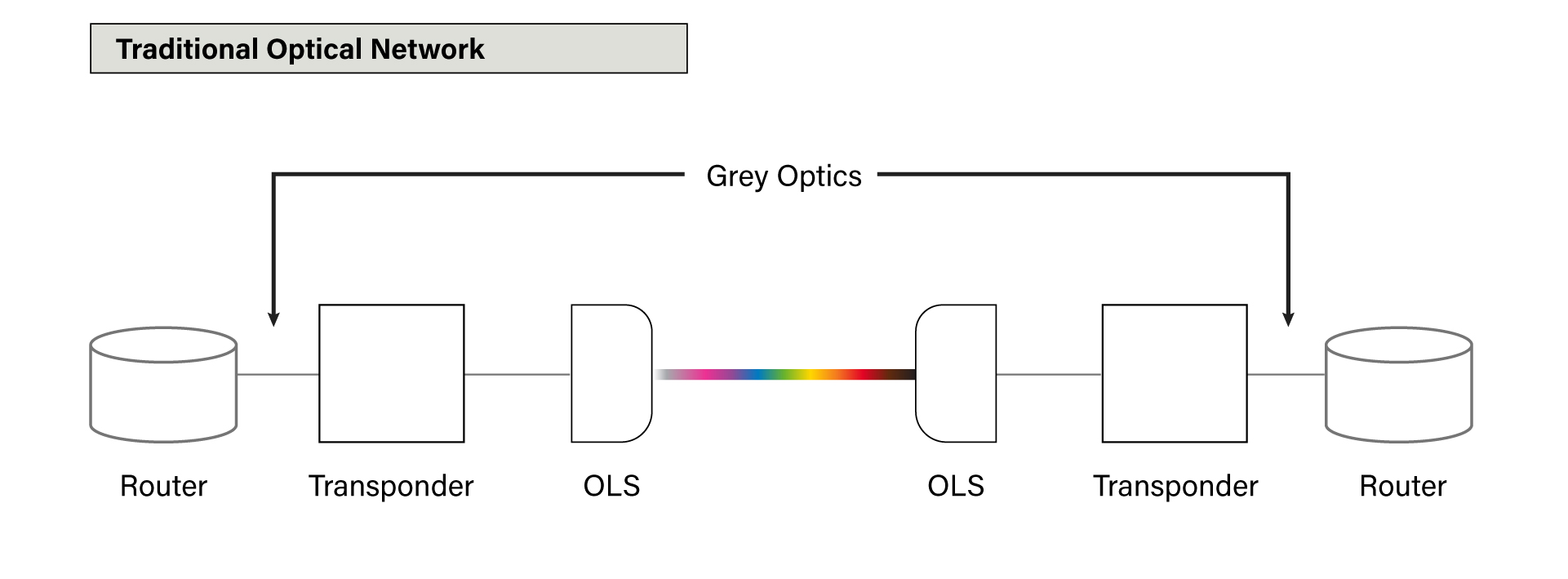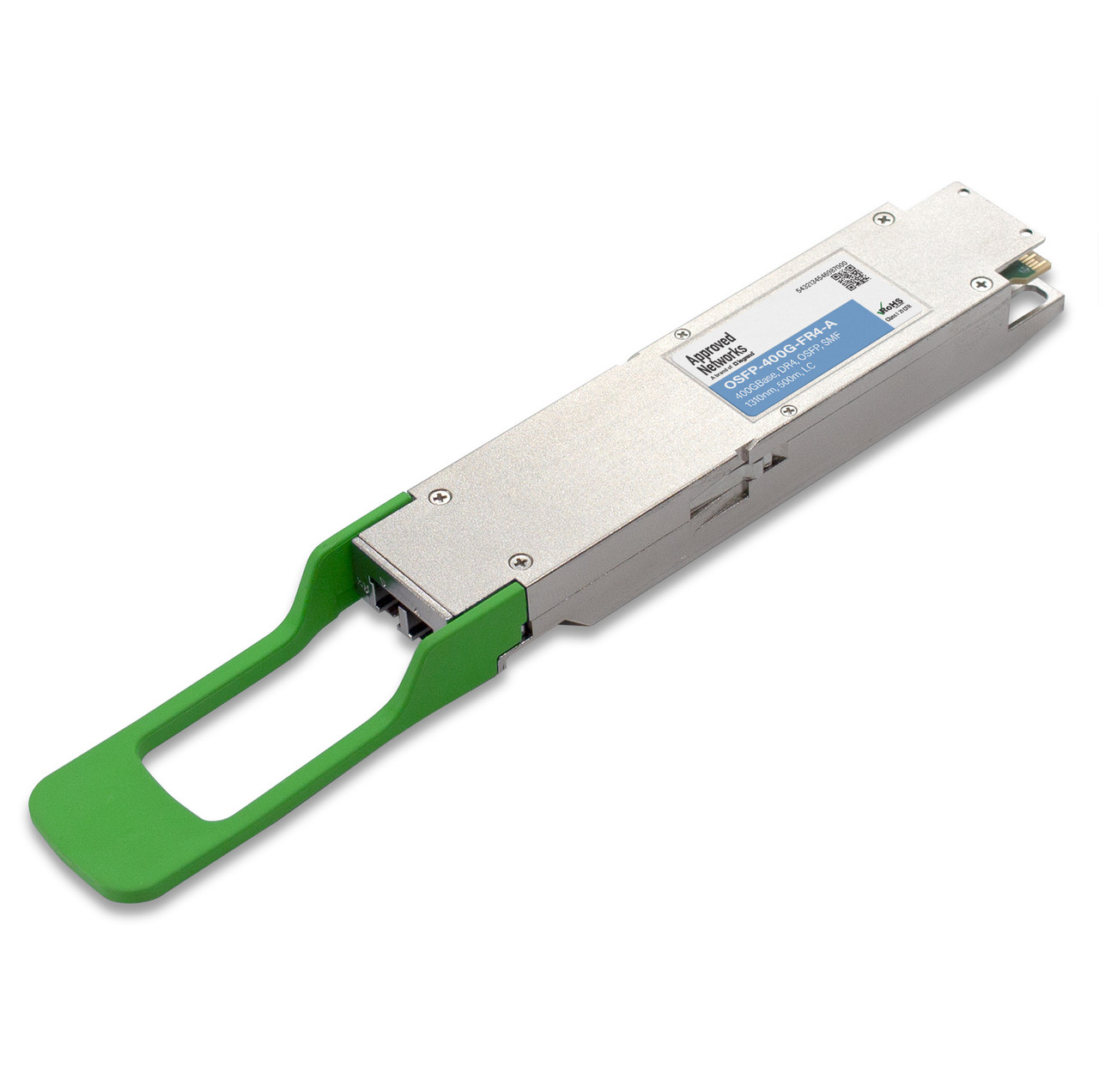A Look Ahead: 2024 Optical Transceiver Market Trends
Posted by Frank Yang on Jan 8, 2024

As the new year begins, I'd like to share my perspective on the optical transceiver market in 2024 and the next few years.
Adoption of AI Driving 800G Deployment
The adoption of artificial intelligence (AI) applications is set to drive 800G deployment. AI cluster servers now boast upgraded networking speeds to 400Gb/s. For example, the Nvidia DGX H100 GPU server system is equipped with four 400G ports, pushing the leaf-spine fabric networking to the high port density of 800Gb/s. Most of these 800G deployments are expected to be short-reach due to the specific requirements of AI applications, focusing on latency, latency consistency, and job completion time (JCT).

The underlying technology for most, if not all, of the 800G pluggable transceivers involves the combination of 100Gb/s per electrical Serializer/Deserializer (SerDes) lane and 100G or 200Gb/s per optical lambda, as illustrated in the figure below. For instance, the 800G SR8, designed for multimode fiber, implements eight electrical lanes of 100Gb/s per SerDes lane and eight parallel optical lanes of 100Gb/s per optical lambda at 850nm. Marvell showcased its 244Gb/s per SerDes lane technology in October 2023. We expect the market to share more demonstrations and pluggable samples in 2024 using 200G SerDes. The 200G SerDes would require the next-generation network processor with a 102.4 Tb/s ASIC.
Enterprise and Telecom Accelerating 400G Deployment
The pace of 400G deployment will likely accelerate, with enterprise and telecom catching up to the advancements predominantly led by hyperscale and large cloud providers. These advancements include 400G variants, such as 400G DR4, FR4, LR4, and 400G Active Optical Cable (AOC). This trend will probably remain robust in the coming years.
High-Speed IP Over DWDM Simplifying Networks
Implementing high-speed IP over DWDM simplifies Point-to-Point metro networks and data center interconnects. As illustrated in the figure below, the traditional optical networking system comprises key components, including the open line system and transponder/muxponder. For distances within 80km, IP over DWDM networking utilizing 400G ZR/ZR+ transceivers and passive Mux/DeMux filters can significantly simplify network configurations and, more importantly, reduce costs. According to my cost models, the combined solution of 400G ZR transceivers and passive Mux/DeMux filters may offer up to 75% savings compared to traditional approaches using muxponder systems.

For cases where the 400G level has yet to be reached, where there is a need to scale up bandwidth over limited fiber strands, the 100G DWDM O-Band transceiver solution provides a simple and lower-cost option for point-to-point connections within 25km. The 100G O-Band solution consists of 100G O-Band DWDM transceivers and up to 16-channel passive Mux/DeMux filters. According to our cost models, the 100G DWDM O-Band solution can save up to 30% of customer costs compared to the 100G Open Line System (OLS).
Linear Drive Optical Transceiver Needs Standardization
The Linear Drive (LD) optical transceiver, a novel architecture that removes the digital signal processing (DSP) function into the switch ASIC, shows promise in reducing power dissipation and costs. Arista reported at OFC 2023 that LD optics (DSP-free optics) could reduce optic power by 50% and system power by up to 25%.

Complexity in Pluggable Transceiver Form Factors Poses a Challenge
While there has been a convergence in 100G pluggable form factors with QSFP28 and 400G with QSFP-DD and OSFP, 2024 is expected to bring more complexity. Although the QSFP28 form factor currently dominates 100G shipments, alternatives such as SFP-DD and SFP112 are rising. OSFP, with three form factors (Open-top, Close-top, and Riding Heat Sink), adds complexity to 400G implementations. Notably, some 400G network interface cards (NICs) may only support the Flat Top OSFP, not the FIN OSFP. In 2024, we expect to witness more than 800G OSFP FIN transceivers. Additionally, 400G pluggable module implementations are becoming more complex, with more instances of 400G implemented in OSFP112 or QSFP112 in addition to the traditional QSFP56-DD and OSFP. Exercise caution when selecting optical transceivers.
In Conclusion
The optical transceiver market will remain strong in 2024 and the next few years, with expectations of numerous upgrades, migrations, and network expansions. Your perspectives on these trends are valuable, and I look forward to hearing from you.



